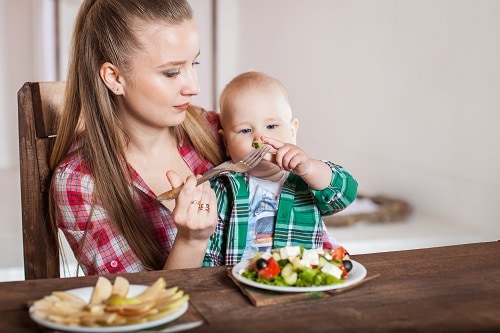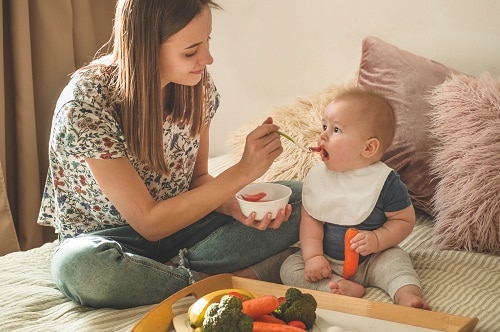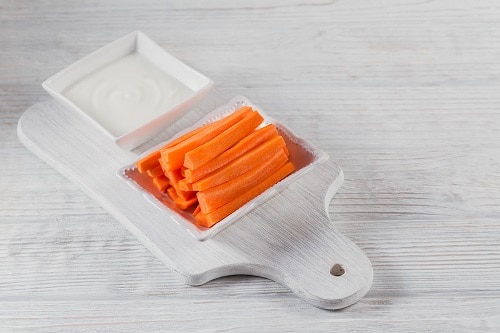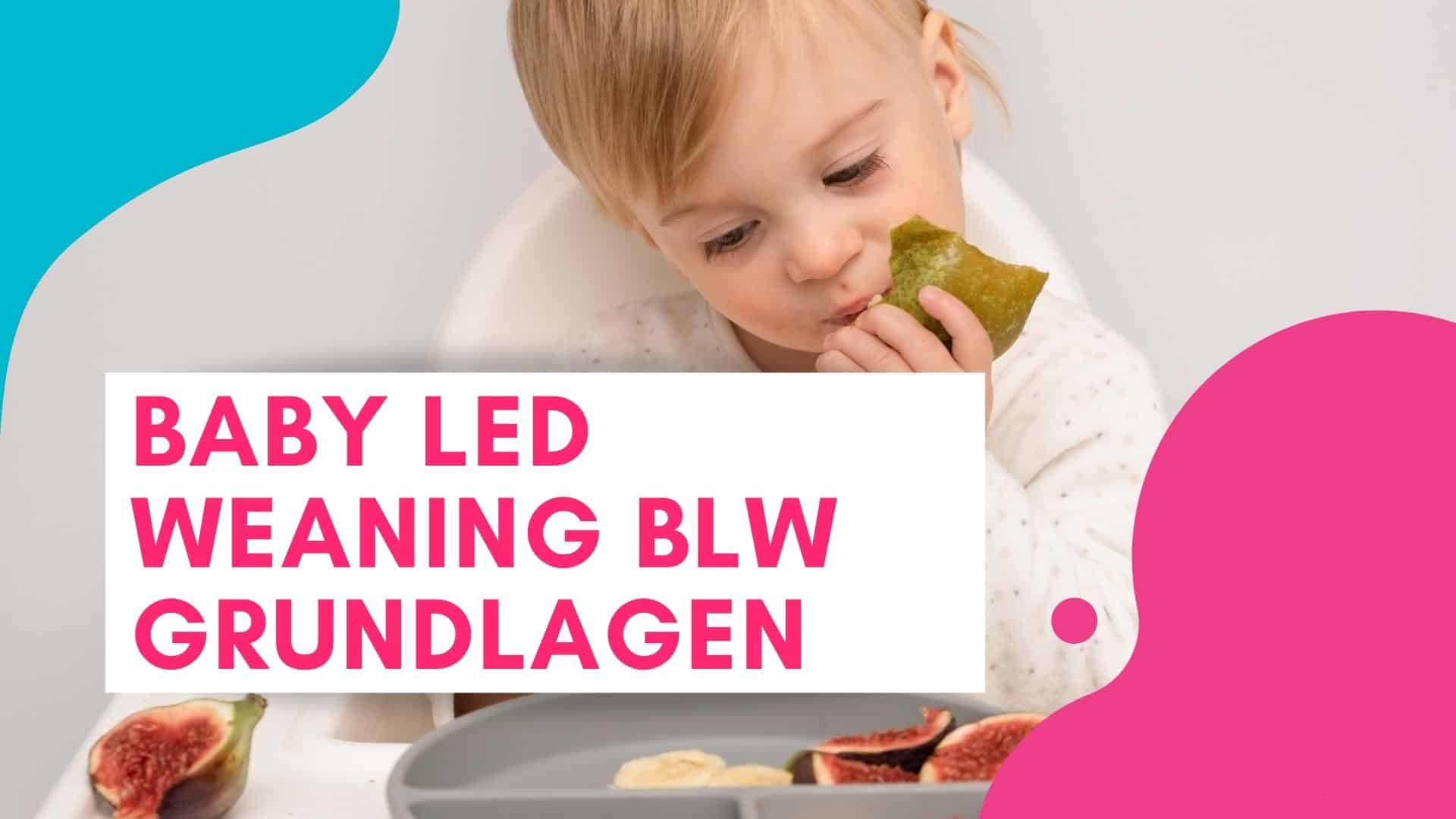Baby Led Weaning BLW basics is a very comprehensive topic. In this first article we want to give you a first insight into the topic.
Babies begin to take an interest in and experiment with solid foods on their own at around six months of age. This transition from the baby to solid food should be supported and guided. BLW offers an important approach to this. Within the framework of the fundamentals mentioned here, the basic background of this method will be presented. This gives both an impression and a guideline to follow regarding Baby Led Weaning and how to do it already,
Thus, we come to the basics of BWL, which, of course, to enable and support a successful and joyful implementation of the introduction of solid food:
- Breastfeeding forms the basis for independent feeding
Breastfeeding is the first time we eat as babies, we take in breast milk, portion it and swallow it. A feeling for the oral cavity and food intake is developed. Your baby will develop its own feeding pace while breastfeeding. Also, the amount and time of eating is thus decided by the baby himself. By taking in breast milk, the baby also already indirectly gets to know different foods, as the taste of breast milk easily adapts to the mother’s diet. Thus, there is already variety on the menu of your breastfed baby.
This is also observed for the most part in the same way in bottle-fed babies. The only thing to take to heart here is to really cater to the baby’s food preferences in terms of time and quantity, and to offer different flavors to stimulate different tastes and encourage a sense of varied food intake. It should also be noted that breastfeeding should of course continue during BLW and the occasional “meal” should not affect the breastfeeding rhythm in any way.
Children who are breastfed in this way often take the transition to solid foods into their own hands and are able to organize their subsequent food intake well and become interested in many different foods.

Baby Led Weaning BLW Basics
- The motivation comes from your baby
Your baby decides when to try solid foods and which ones. You are responsible for making them available. Make sure to also prevent any possible chaos and, for example, lay out the high chair or the floor around it accordingly with cloths or foil.
Your baby will be motivated by watching you eat. It also likes to explore and play with new things, including food. Thus, curiosity plays an important role in this transition, also for your baby’s motivation behind it.
You prepare and strengthen the interest, when, how and what is tried out decides your baby himself and this you have to respect.
- Does ingestion pose a risk and how can I further reduce this?
Babies decide for themselves what they can eat and spit out what doesn’t taste good or doesn’t fit in their throat. They only really learn to swallow something (then digestion is also only developed accordingly) when they have also learned to chew, and chewing is in turn based on the development of the ability to grasp. Thus, this point should be waited for and observed and not tried to give porridge with the spoon against this stimulus of not yet swallowing. This represents a central point of the Baby Led Weaning BLW basics.
Note that you always feed your baby in a sitting position. In this way, you significantly reduce the risk of swallowing. This way, your baby can sit on your legs at first, and as soon as he or she can sit on his or her own, take a seat in his or her own high chair at the communal dinner table. The upright position makes it easy for your baby to spit out food that he wants to try but then doesn’t want to eat. It should also be noted that peanuts are not suitable for babies, but they are usually not yet able to grasp them themselves. Babies can grasp small things only at a more advanced age; at first, foods should be in the shape of small fries and thus be graspable with the whole baby’s fist.

Nevertheless, you should always observe your baby while eating, so you can also notice his progress and confirm it positively. So don’t help your baby with this first independent food intake, because he can only eat or take food himself as far as it is really healthy and suitable for your baby himself right now.
- What characterizes good baby nutrition?
One interesting piece of information in advance: babies do not yet need small teeth, at the very beginning they are able to grind their food using only the jawbone – with the coming teeth this is of course much better.
You should offer your baby a wide range of foods, including what you are eating yourself, if possible. At the same time, the food should not contain spices, also you should never offer your baby fast food. Otherwise, there are no other restrictions on food choices for babies 6 months and older. The food should differ in size, texture, color or shape, because it is this aspect that is of particular interest to your baby. At first, these should fit snugly in your baby’s fist and extend a little beyond it to offer a part to put in the mouth (your baby will hold the piece at first while trying it, letting go will develop later). It is a good idea to briefly put very hard foods, such as carrots, into boiling water or steam them to make them a little softer for chewing (and thus “chewable” in the first place). Meat should initially be offered as one larger, easy-to-grasp piece. Your baby will suck on it and explore taste and texture.
However, family history of allergies should be noted, as these may also have been passed on to the baby.

Baby Led Weaning BLW Basics - pay attention to drinking habits.
- What is my baby allowed or able to drink? And when should it do so?
Breastfed babies do not need additional sources of fluids. Nevertheless, some water can be offered with the solid foods, also to provide another incentive. However, if the baby usually does not reach for it, there is no need to worry.
Babies who are fed powdered milk need a little water with their solid food intake, as this mixed milk is less thirst-quenching.
This concludes the basics of the BLW, which could of course be supplemented with further details and aspects. Finally, a brief overview of important tips that support and promote the implementation and success of Baby Led Weaning is provided:

- Choose pieces of food that can be easily grasped by the baby’s hand (e.g. B. Carrots cut into matching sticks.
- Always offer your baby something to eat as well. This is how you ensure motivation.
- If possible, choose the same foods for your baby (or at least some of them) that you are eating at your dinner. This way your baby can observe and imitate you.
- Offer a variety of food little by little. So there is a choice and also the diversity encourages your baby to try and compare. Here it is also important to remember that once “no” does not always mean “no”, you should offer the same previously rejected foods again later in a different context.
- Don’t expect your baby to “eat” right away, and don’t help your baby put anything in his or her mouth.
- Offer your baby something to drink at the same time, but don’t expect him to always help himself to it.
- Don’t offer your baby salted or sugared foods, or fast food. On the one hand, this is not healthy for your baby, on the other hand, you support a later development of an unhealthy diet.
Have fun on your joint voyage of discovery into the countless world of solid foods 😊
Also, read more great and informative posts on our Wiladu blog.

